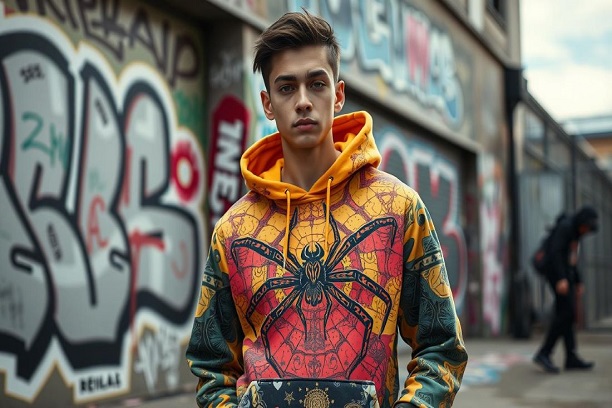
In recent years, AI-designed clothing has transformed the way fashion brands create, produce, and sell garments. This technological leap blends creativity with data, enabling designers to innovate faster while meeting evolving consumer demands.
Artificial intelligence entered the fashion industry through digital design tools and automated pattern generation. Today, it plays a central role in shaping trends and developing unique, personalized clothing collections for diverse audiences worldwide.
Fashion houses increasingly rely on AI algorithms to predict future styles. By analyzing historical fashion data, AI can suggest design elements that resonate with specific audiences, reducing guesswork and increasing design accuracy significantly.
AI also facilitates faster prototyping. Designers can instantly visualize garments in 3D before manufacturing, allowing adjustments in real time and minimizing waste while optimizing production timelines for the competitive fashion marketplace.
Trend forecasting once relied on expert intuition and seasonal runway shows. Now, AI uses big data analytics to detect emerging patterns from social media, e-commerce sales, and global street style photography.
By processing millions of images and posts, AI identifies recurring colors, textures, and silhouettes. These insights help fashion brands produce collections that align closely with consumer preferences and seasonal shifts.
This approach reduces risks associated with producing unwanted styles. Retailers can stock items more confidently, knowing they match predicted demand, resulting in fewer unsold products and more sustainable manufacturing cycles.
AI enables mass customization by collecting data on individual preferences. Consumers can input size, style, and fabric choices, and AI designs garments that perfectly match their body type and aesthetic taste.
Fashion brands now offer virtual fitting rooms powered by AI. These tools simulate how clothing looks and fits without physical trials, improving the shopping experience for online customers and reducing return rates.
This level of personalization fosters stronger brand loyalty. Customers appreciate having unique clothing options that cater specifically to their style identity, making AI a valuable marketing and customer engagement tool.
Sustainability has become a core concern in fashion. AI assists by minimizing fabric waste during pattern creation and improving supply chain efficiency, ensuring resources are used more responsibly and ethically.
Machine learning algorithms forecast production needs, preventing overproduction—a major cause of environmental waste. By predicting exact inventory requirements, brands reduce surplus and the carbon footprint of clothing manufacturing.
AI also aids in recycling initiatives. It can analyze old clothing materials, suggest upcycling methods, and create designs that incorporate reclaimed fabrics without compromising quality or aesthetics in final products.
The COVID-19 pandemic accelerated virtual fashion adoption. AI-powered tools now help create photorealistic runway models and clothing renders for online events, expanding audience reach without physical limitations or costs.
Virtual fashion shows allow brands to experiment with bold, imaginative designs that might be impractical in physical production. These digital pieces still influence real-world trends and customer purchasing decisions.
Such innovations also democratize fashion, allowing smaller designers to showcase collections globally without the expense of traditional runway events, leveling the playing field in a competitive industry.
Rather than replacing designers, AI enhances their creativity. Algorithms offer suggestions based on trending colors, patterns, or cultural influences, giving designers fresh ideas to build upon.
AI can merge inspiration from various eras and regions, producing eclectic styles that might not have emerged through human brainstorming alone, enriching the diversity of modern fashion design.
Designers retain full creative control, but AI helps them explore unconventional concepts more quickly, acting as a powerful collaborator rather than a competitor in the creative process.
Beyond clothing shapes, AI helps develop new textiles. By analyzing fabric performance data, AI recommends blends that improve comfort, durability, and sustainability while meeting specific fashion requirements.
Smart fabrics incorporating sensors and reactive properties are also designed using AI. These garments can adjust temperature, track health metrics, or change colors based on environmental conditions.
Material innovation through AI opens new possibilities for fashion technology integration, merging style with functionality in ways that were once limited to science fiction concepts.
A smooth supply chain is vital for fashion success. AI predicts material needs, monitors shipping routes, and detects potential disruptions to maintain timely deliveries and consistent product availability.
Automated warehouse systems integrated with AI improve order accuracy. They can sort, package, and distribute products efficiently, reducing operational costs and enhancing overall customer satisfaction.
Real-time analytics also provide insights into supplier performance, helping brands choose partners who align with sustainability goals and quality standards consistently.
Fashion marketing benefits greatly from AI. Algorithms analyze consumer behavior, enabling brands to target audiences with personalized ads and style recommendations that resonate on a deeper emotional level.
Social media listening tools powered by AI detect what influencers, celebrities, and consumers are discussing, giving brands opportunities to engage with trending topics faster and more effectively.
This data-driven marketing approach increases conversion rates and strengthens brand identity, allowing companies to maintain relevance in a constantly evolving industry landscape.
Fast fashion brands use AI to rapidly design and release styles at low cost, ensuring constant alignment with global trends. This agility attracts younger, trend-focused audiences seeking fresh looks.
Luxury fashion brands, however, leverage AI for exclusivity and precision craftsmanship. Personalized designs, high-quality materials, and heritage storytelling are combined with AI’s data-driven efficiency for premium appeal.
Both approaches demonstrate AI’s versatility, serving vastly different market segments while reshaping how clothing is conceived, produced, and sold globally.
AI raises ethical questions, from potential job displacement for traditional designers to concerns about data privacy when collecting consumer measurements and preferences. Transparency remains a critical industry challenge.
There is also the risk of creative homogenization if too many brands rely on similar AI algorithms, leading to repetitive designs that stifle innovation in the long term.
Balancing technological advancement with human artistry and ethical responsibility ensures AI remains a tool for empowerment rather than exploitation in the fashion sector.
As AI capabilities grow, clothing may become fully responsive to our needs, adjusting fit, color, and style dynamically. This future blends personalization with technological sophistication in unprecedented ways.
Global collaboration between designers, technologists, and sustainability advocates will be key in shaping AI’s positive role in fashion. Innovation must remain mindful of cultural diversity and environmental responsibility.
Ultimately, AI-designed clothing signals a new era where fashion is faster, smarter, and more inclusive, redefining the relationship between technology, creativity, and personal expression.

This post has been published by the admin of our website, responsible for content management, quality checks, and providing valuable information to our users.

